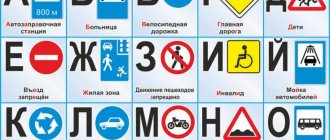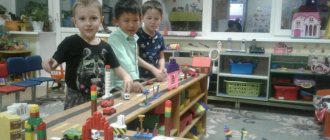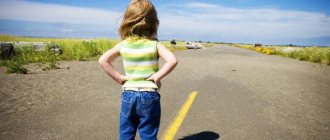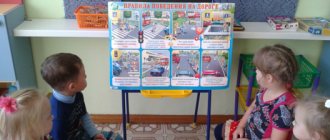Wall newspaper
This is an incomparable visual aid. It is issued together with children at school by the teacher who supervises work on traffic rules. To keep information up to date, it is recommended to release it once every two weeks. Here you can create various sections, reflecting information about traffic rules competitions and the work of the team of Young Traffic Inspectors. You can place a certain historical educational program on traffic rules.
The history of flicker, traffic lights and road signs will certainly attract the attention of many. Young intellectuals may be interested in a crossword puzzle or a chain word on traffic rules. Photos of non-standard road signs from other countries will inspire you to become more familiar with your own. The main thing is to involve children in learning and observing the Rules of the Road. And for this, all means are good!
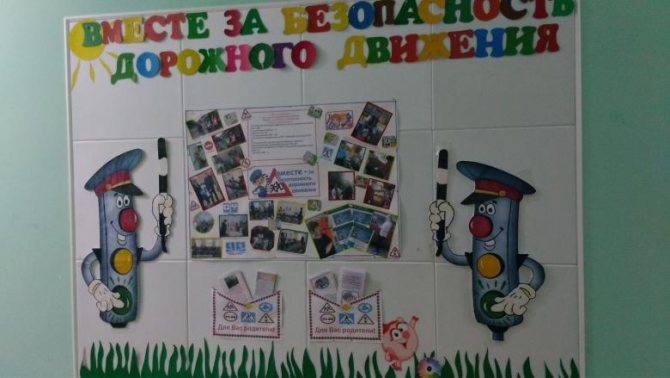
Master class on making wall newspapers. It can be stationary with changing sections or completely changing. Let's consider the stationary option.
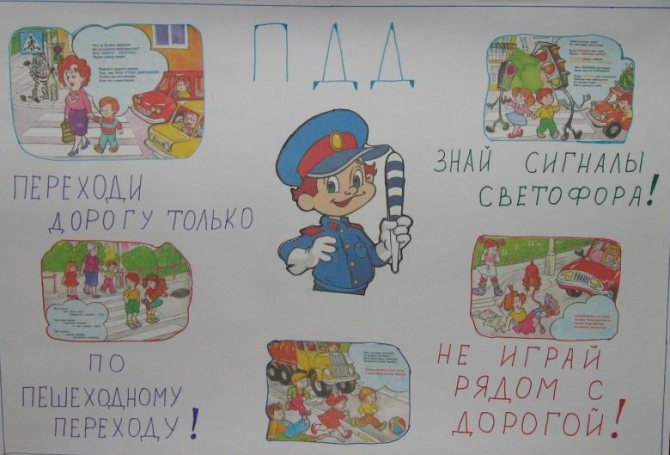
The format A 1-Whatman paper is best used for wall newspapers. 1. We measure its dimensions. 2. A sheet of plywood is taken and processed in such a way as to create a stand with the specified parameters. 3. Take whatman paper and mark the place for the main heading and headings. 4. We design the wall newspaper according to the developed plan. 5. Using a screwdriver, attach the brackets on which the stand will hang to the plywood. 6. Take the buttons and attach the wall newspaper to the stand. All is ready!
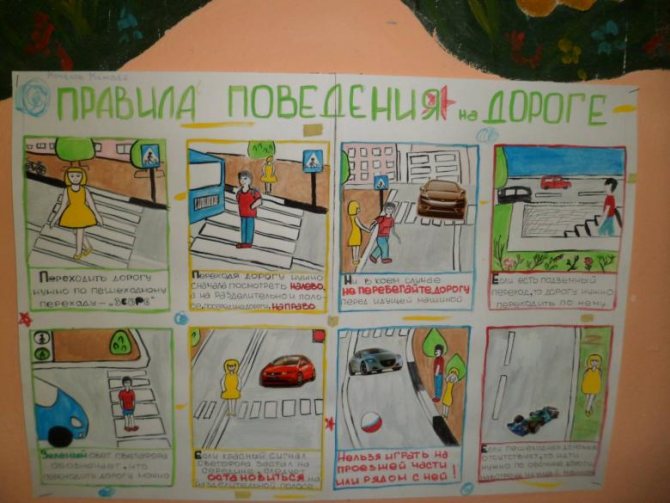
Such a wall newspaper can always be easily updated. And if it is published on a schedule by a changing editorial board, then readers will never get tired of it with its sameness. And if you hold a competition of similar wall newspapers between classes at school, then the work on studying traffic rules will be in full swing all year, which will affect the reduction in accident rates. After all, where traffic rules are taught in this way, children get into fewer accidents! Making traffic lights, signs, and wall newspapers can be combined with learning poems, songs, reading stories, and watching cartoons on traffic rules. This way information is remembered much faster and better.
Traffic lights
There is more than one method for making traffic lights. The simplest one is made from plastic bottles. Take a 2-liter dark bottle. Two or three (depending on which traffic light we need - for pedestrians or drivers) windows are cut into it.
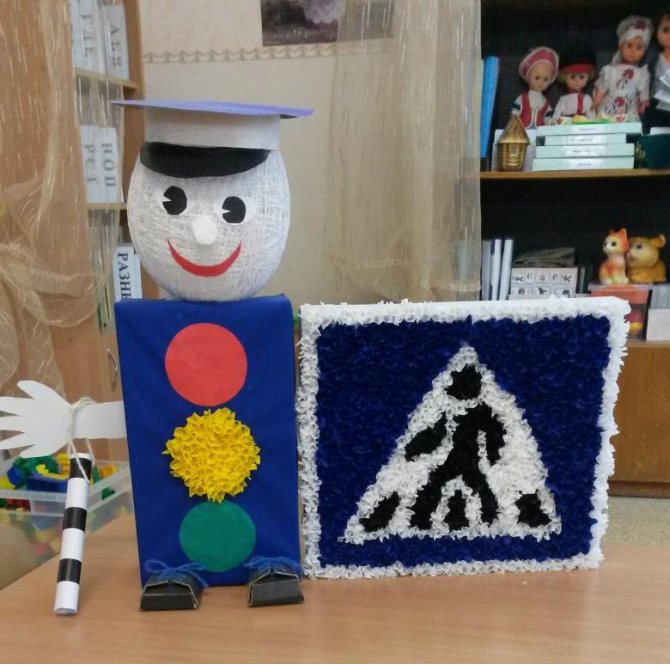
We install light bulbs opposite the windows. They are connected to batteries and equipped with power buttons. Then we close the windows with colored glass (red, yellow and green, respectively). You can use color film for this. The button puts the traffic light into working condition and lights the signal necessary to perform a certain action.
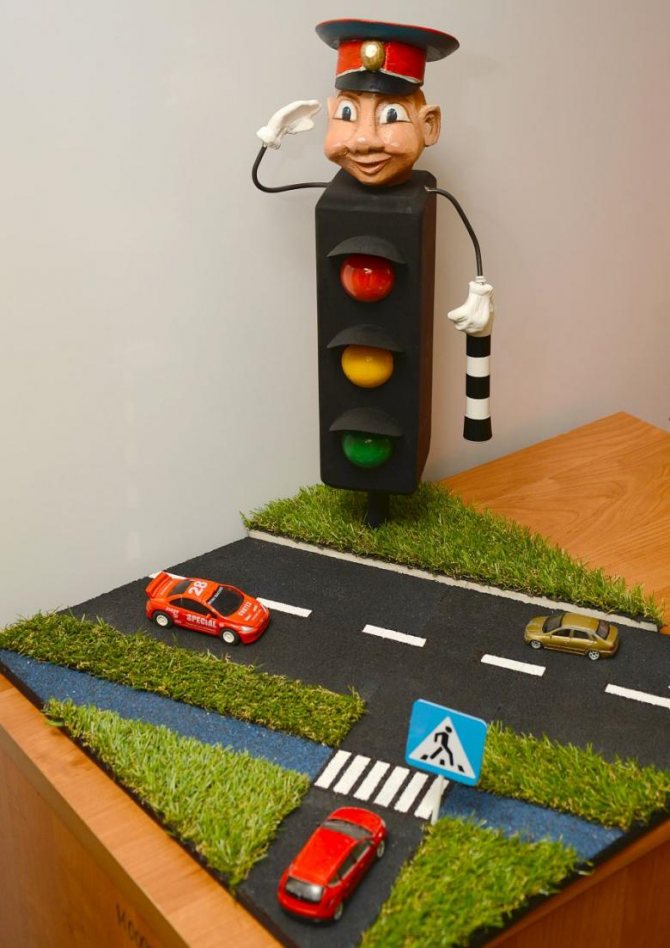
The traffic light can be installed on a tube that is dug into the ground or is portable.
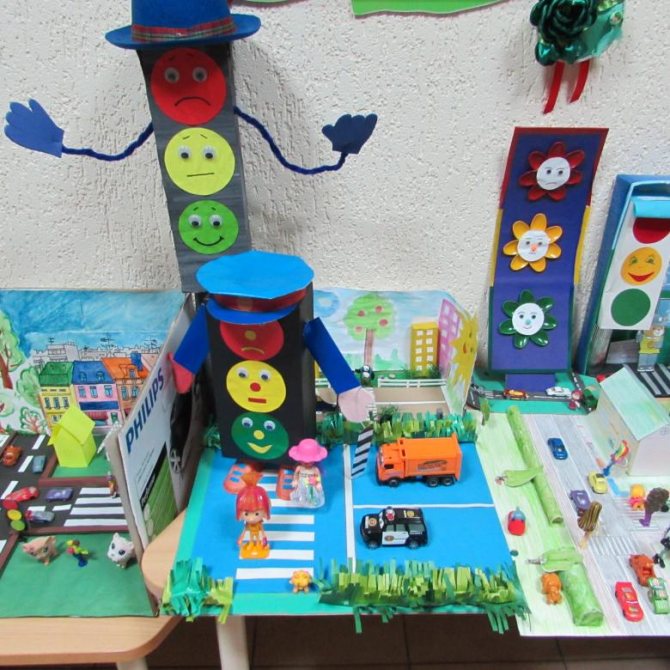
A game
To test your knowledge of traffic rules, you can create a portable game.
- We create a playing field with houses, signs and pedestrian crossings.
- We are thinking through interesting tasks that a pedestrian who finds himself at one point or another in the game will need to do.
- We select pedestrian characters of the game.
- Cut and glue the cube for the game. If you still have the old one, even better.
Now let's go!
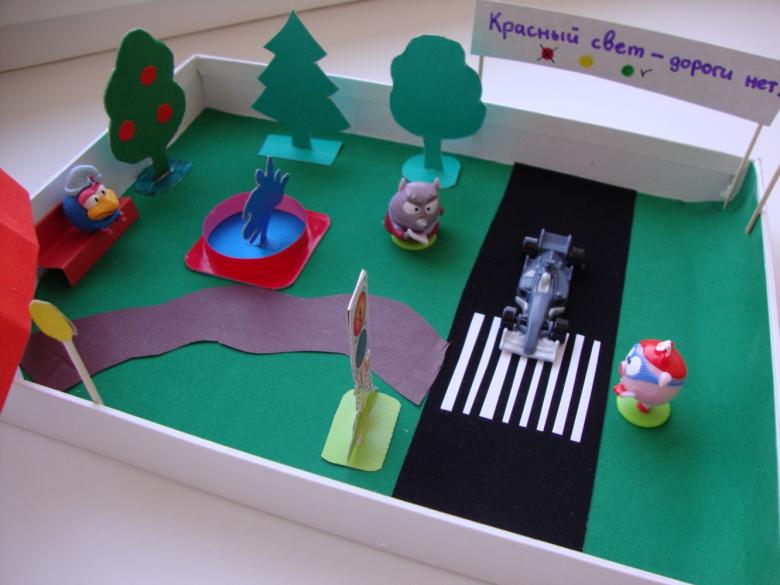
Mini city
A mini model of the city can be made by parents with a child. Or it can be used as project work in the elementary grades of school or the senior group of kindergarten. Take the lid from the box. The larger and wider it is, the better.
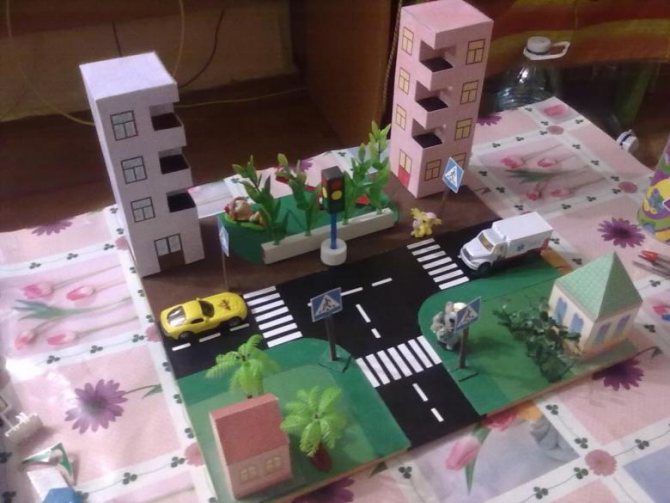
Master class on creating a microdistrict
- On a piece of paper equal to the area of the box, we create a sketch diagram. Don't forget about houses, traffic lights and signs.
- We create houses. You can create the layout of the house yourself or take it from a design book.
- Two wide strips are cut out of black paper. This is our roadway. We glue it. From the gray we cut out four narrower stripes. This is the sidewalk. Carefully glue it too.
- A thin white dividing strip is cut out of the white one.
- Then the road marking “pedestrian crossing” is cut out. One by one, a dividing strip and a zebra stripe are glued onto the layout.
- A three-dimensional traffic light (so that it can be seen from all four sides) is made from a black scanner, onto which multi-colored circles are already glued in advance.
- The road signs we need are cut out mirror to each other.
- Now it's the turn of the houses. We glue them, creating a street and neighborhoods.
- If the boys in the class share small cars for the future city, it will be just wonderful.
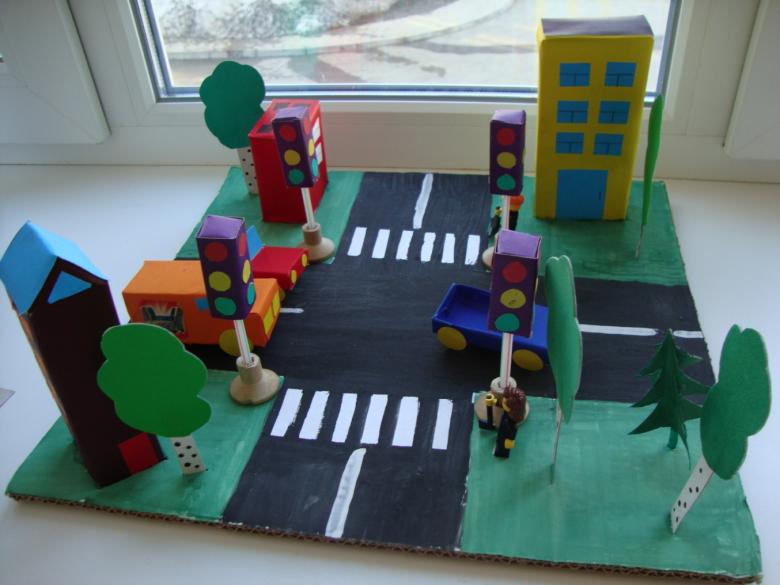
Road Safety Day in Kindergarten
Road Safety Day "Travel on a Green Light".
In our kindergarten, great attention is paid to the safety of children. However, children, firstly, do not know how to consciously act in a given environment, secondly, they do not have basic skills for safe behavior on the street, in transport, and thirdly, preschoolers do not develop independence and responsibility for their actions. To solve these problems, we hold road safety days. We devoted this day to the practical application of traffic rules, and also gave the children the opportunity to express themselves creatively in staging their favorite fairy tale, which allowed the children to look for a way out of a difficult situation together, learn together, and apply knowledge of traffic rules in practice in a playful way. This methodological development can be used by teachers in developing the foundations of safety in preschool children.
Road Safety Day “Journey to the Green Light” at MBDOU No. 12 in Kurganinsk.
event plan.
Date: 02.09.15.
Morning:
•Consultation for parents “Children - road users” (preparatory group). •Conversation “What I saw on the street when I went to kindergarten.” (preparatory group). •Conversation “Our friend is the traffic light!” (middle group). •Story-based morning exercises “Journey to the Green Light” (preparatory group). Didactic game “Recognize and name the road sign” (preparatory group).
Walk:
•Showing the fairy tale “Kolobok on the City Streets” to children of primary and secondary groups. •Entertainment “Red, Yellow, Green” preparatory group. •Outdoor games “Sparrows and a car”, “Planes”, “Traffic signals” (junior, middle groups.) •Construction of streets from sand, playing out. •Plot-based role-playing game “Chauffeurs” (middle group).
Evening:
•Guessing riddles about road signs (preparatory group) •Constructing a road for cars (middle group). •Didactic game “Assemble a car” (middle group). •Looking at illustrations depicting streets, discussing the behavior of pedestrians on the road (preparatory group).
Entertainment script “Red, Yellow, Green”, dramatization of the fairy tale “Kolobok on the City Streets”.
Goal: To develop in children, as road users, sustainable skills for safe behavior on the streets and roads. Objectives: Educational: Continue to introduce the purpose of road signs; check and consolidate knowledge of the Rules of the Road; to develop skills in following the basic rules of behavior on the street and road in order to prevent child road traffic injuries. Developmental: Develop the ability to practically apply acquired knowledge in the road transport environment; systematize children's knowledge about traffic rules by playing out problem situations; continue to develop the physical qualities and creative abilities of older preschoolers. Educational: To cultivate in children a culture of behavior in public places and a sustainable interest in independent motor activity, motor creativity; stimulate the formation of self-confidence and strength; cultivate a friendly attitude towards each other. Methodological implementation: dramatization of a fairy tale, sports competitions in combination with theoretical knowledge of traffic rules. Preliminary work: Study of posters on accident prevention; familiarization with road signs; targeted walks: “Getting to know the street”, “Observing transport”, “Pedestrian crossing”, etc. Reading fiction on the topic: S. Mikhalkov “If the light turned red”, “My street”, S. Prokofieva, G Sapgir "My friend is a traffic light." memorizing poems by V. Kozhevnikov “Traffic Light”, Yu. Yakovlev “Traffic Rules”. Preparing a dramatization of the fairy tale “Kolobok on the City Streets” with children from the preparatory group. Materials and equipment: Music center, musical accompaniment (phonograms): “Sports March”, song “Our City” (music by E. Tilicheeva, lyrics by M. Kravchuk). song “We are going, going, going, to distant lands” by M. Starokadomsky, “It’s fun to walk together” by V. Shainsky; "Road Signs" set; caps of fairy tale heroes, a policeman’s cap, a traffic policeman’s baton; balloons (red, yellow, green); 4 steering wheels, 2 scooters, 2 bicycles, 4 hoops, 10 gymnastic sticks. Characters: Presenter (physical education instructor), Klepa the Clown (adult), Kolobok, Hare, Bear, Fox, Guard (children). The presenter and all the characters come to the site to visit the children of the younger group.
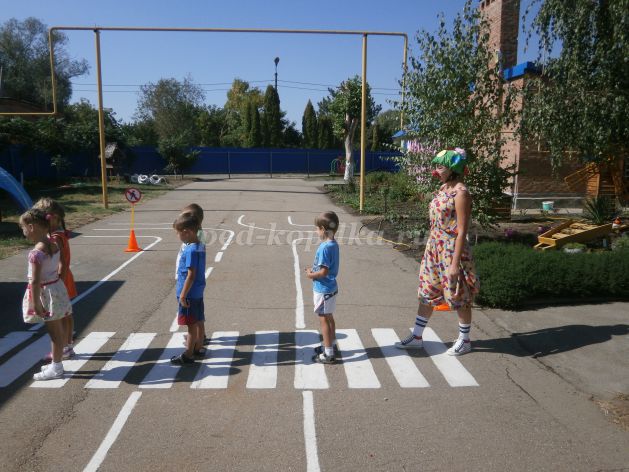
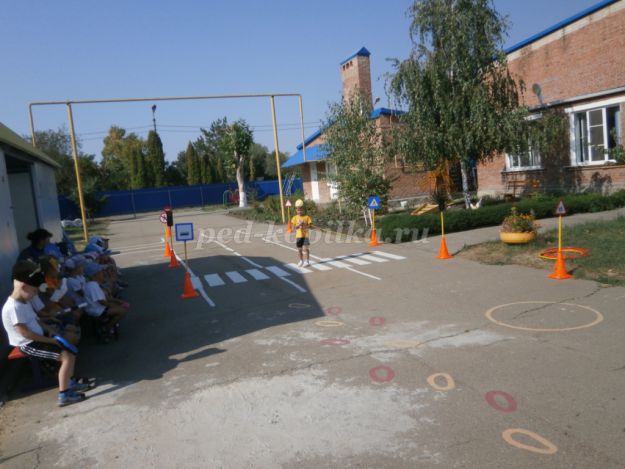
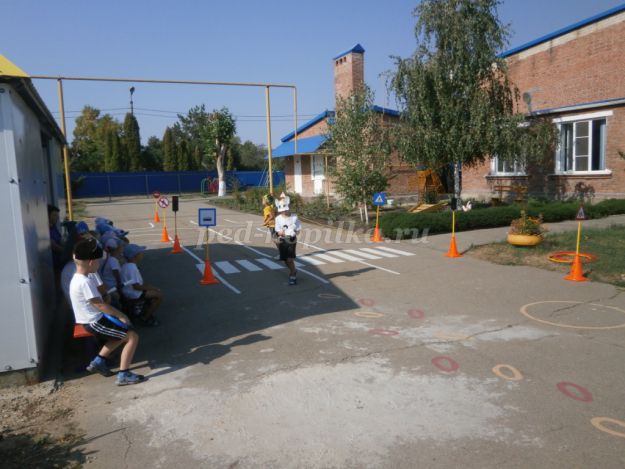
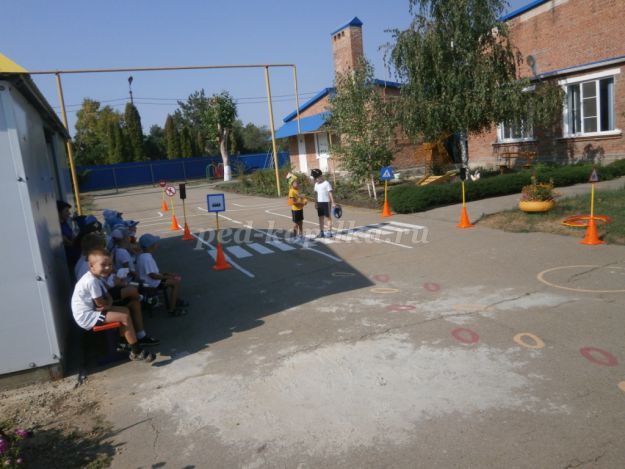
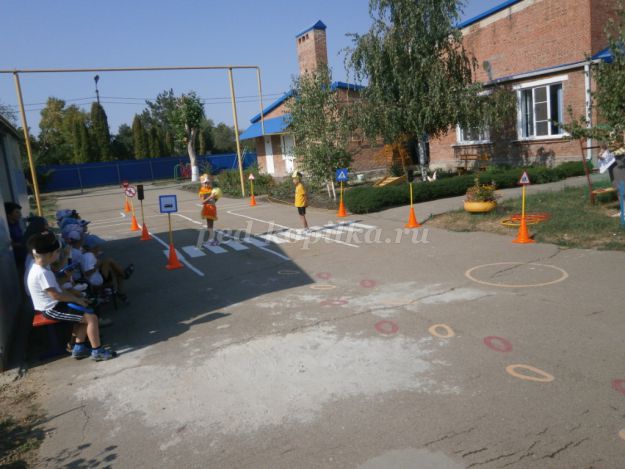
Fox. I, Fox - my name is Accident, Guess why? I've been walking along the roads for many years, I've done a lot of bad things. Kolobok. Great, now I have someone to play with on the road. Fox: Kolobok, let's have a mini-match, I have a great ball! Catch it, throw it, kick it away, Now we’ll start a commotion, We’ll hit the bumpers of the cars! The bun hits the ball and the brakes squeal. The fox runs away, Kolobok covers his face with his hands.
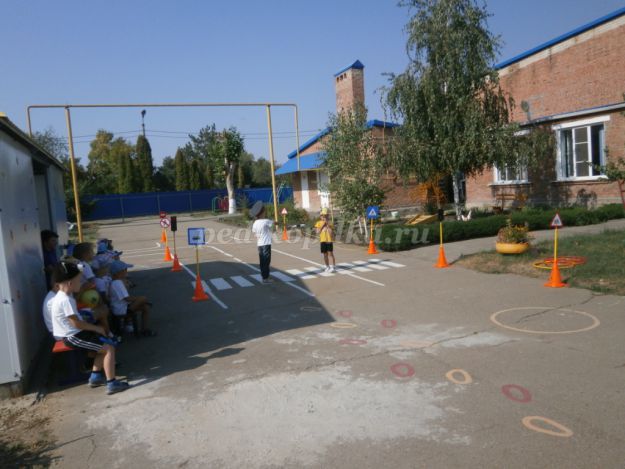
The guard blows his whistle and goes out to meet Kolobok. Guard. What kind of ignoramus came to our streets? He doesn’t see the traffic light, now he’s learning a lesson. Is it possible to risk your head on the pavement? You're not at the circus, there's a road here, who's surprised? If you don't know the rules, you'll end up under a car! Kolobok. (addresses children in the middle group) What is a traffic light? Show me where he is. And why is he standing here, tell me, children? Children's answers. I didn't know, sorry kids. I thought I’d just take a walk and play a little….. Guard. Know that playing on the roads brings illness and anxiety. You can always cross the road on the street, And the talking colors will tell you and help you! Children come out with balloons.
Yulia A. (raises the red ball up): If the light turns red, it means it’s dangerous to move!
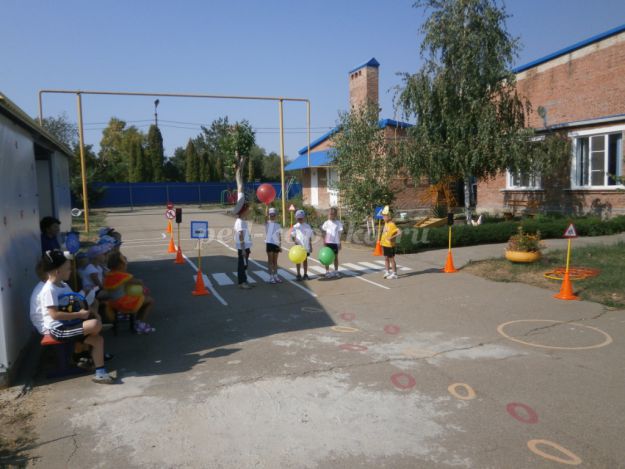
Lera G. (raises the green ball up): The green light says: “Come on, the path is open!” Guard. Kolobok, teach green, yellow, red, So that the path home is safe!
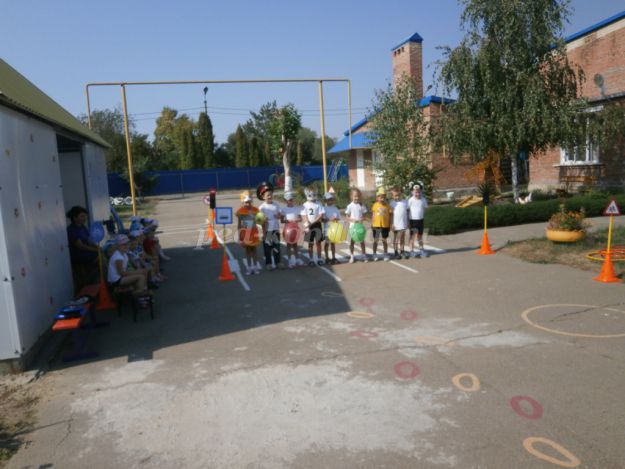
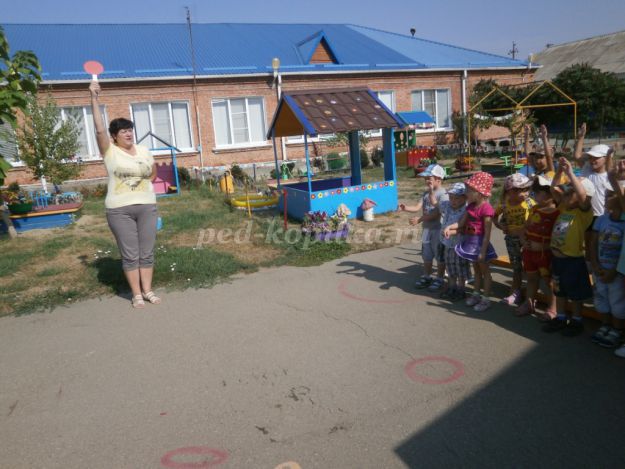
If I show red then you put your hands up
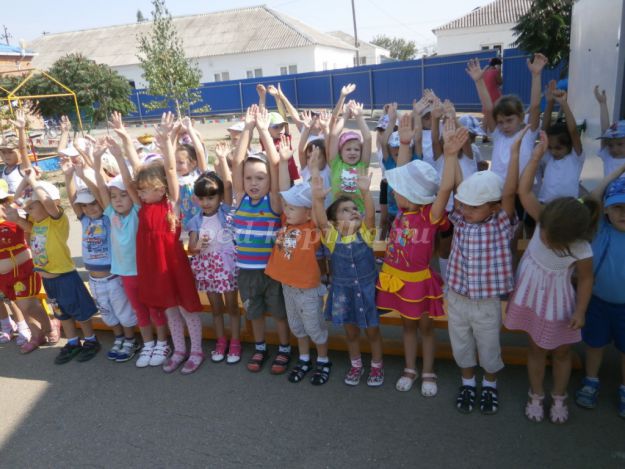
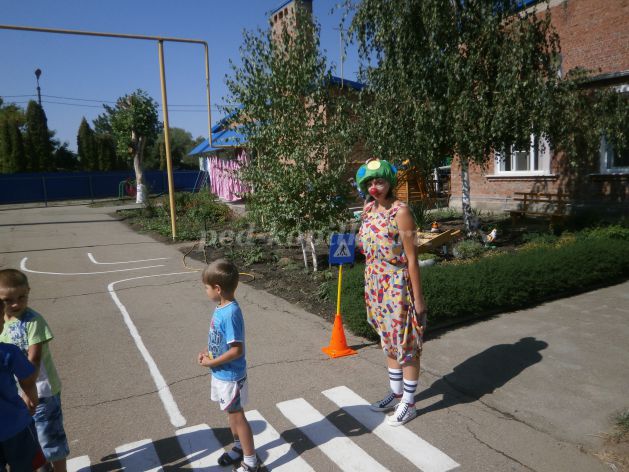
Clown: (points to road signs). What do you have? Children. Road signs. Clown: Oh, there are so many of them, I will never remember them, they don’t teach this in the circus.. Host: We will try to teach you. Road signs are pedestrians' best friends. Each sign has its own name. Road signs tell you what you can and cannot do. Now the children will explain everything to you. Children leave at will. 1 child approaches the “Pedestrian crossing” sign. A walking man is drawn on a white triangle with a red border. This sign tells the driver: “Be careful, there is a crosswalk ahead.”
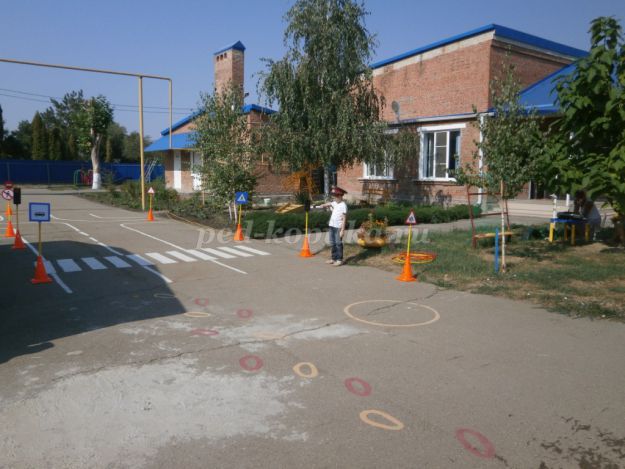
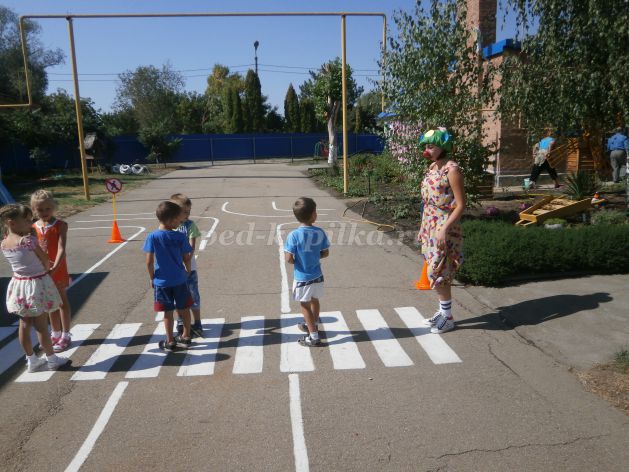

Two teams are participating. At the leader’s signal, the players of both teams ride a scooter to the stand (sign), return back, and pass the scooter to the next participant. The fastest team wins.
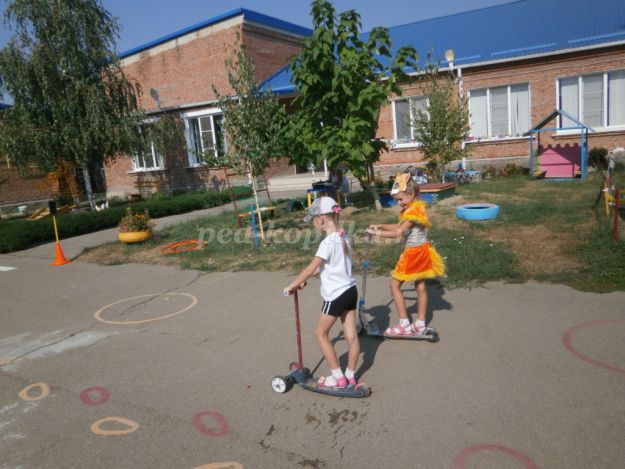
We recommend watching:
Scenario of a sports festival in the preparatory group “Forward to the Olympics on a safe road!” Lesson notes on traffic rules. Middle group Literary and musical composition according to traffic rules for older preschoolers Entertainment according to traffic rules for older preschoolers
Similar articles:
Summary of an educational lesson for older preschoolers on traffic rules
Summary of a lesson on traffic rules in the senior group in kindergarten. Rules for pedestrians and passengers
Summary of a lesson on traffic rules in the senior group in kindergarten. Types of traffic signs. Warning road signs
Summary of a lesson on traffic rules in the senior group of kindergarten. Rules for cyclists
Tasks on traffic rules for preschoolers in pictures
